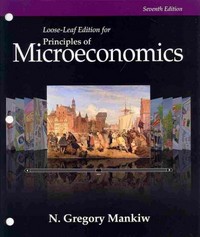(Dollars) (Dollars) Consumer Surplus I I I I Producer Surplus I I I I eeRemmeeR R o E Based on your analysis, as a result of the tariff, Kenya's consumer surplus V by , producer surplus E Y of V by , and the government collects in revenue. Therefore, the net welfare effect is a - Producer Surplus I I I increases 1- r analysis, as a result of the tariff, Kenya's consumer surplus V by , producer surplus V by , and the government collects in revenue. Therefore, the net welfare effect is a Y of - 3. Welfare effects of a tariff in a small country Suppose Kenya is open to free trade in the world market for wheat. Since Kenya is small relative to the international market, the demand for and supply of wheat in Kenya have no impact on the world price. The following graph shows the domestic market for wheat in Kenya. The world price of a ton of wheat is PW = $400. On the following graph, use the green triangle (triangle symbols) to shade the area representing consumer surplus (CS) when the economy is at the free-trade equilibrium. Then, use the purple triangle (diamond symbols) to shade the area representing producer surplus (PS). PRICE (Dollars per ton} 680 640 600 560 520 480 440 400 360 320 280 Domestic Demand 45 60 75 90 105 QUANTITY (Tons of wheat) 120 Domestic Supply 135 150 CS PS Complete the following table to summarize your results from the previous two graphs. with Free Trade with a Tariff (Dollars) (Dollars) Consumer Surplus I I I I Producer Surplus I I I I Government Revenue 0 :I Based on your analysis, as a result of the tariff, Kenya's consumer surplus V by , producer surplus V by , and the government collects in revenue. Therefore, the net welfare effect is a V of - Because Kenya participates in international trade in the market for wheat, it will importl:] tons of wheat. Now suppose the Kenyan government decides to impose a tariff of $40 on each imported ton of wheat. Under the tariff, the price Kenyan consumers pay for a ton of wheat becomes |:] , and Kenya will import |:| tons of wheat. Use the following graph to show the effects of the $40 tariff. Use the black line (plus symbol) to indicate the world price plus the tariff. Then, use the green points (triangle symbols) to show the consumer surplus with the tari' and the purple triangle (diamond symbols) to show the producer surplus with the tariff. Lastly, use the orange quadrilateral (square symbols) to shade the area representing government revenue received from the tariff and the tan points (rectangle symbols) to shade the areas representing deadweight loss (DWL) caused by the tariff. ? 680 Domestic Demand Domestic Supply 640 World Price Plus Tariff 600 560 520 CS 480 PRICE (Dollars per ton) 440 PS 400 360 Government Revenue 320 280 0 15 30 45 60 75 90 105 120 135 150 DWL QUANTITY (Tons of wheat)Consumer Surplus Producer Surplus decreases Government Revenue 0 increases Based on your analysis, as a result of the tariff, Kenya's consumer surplus by $ , producer surplus by $ and the government collects $ in revenue. Therefore, the net welfare effect is a of














